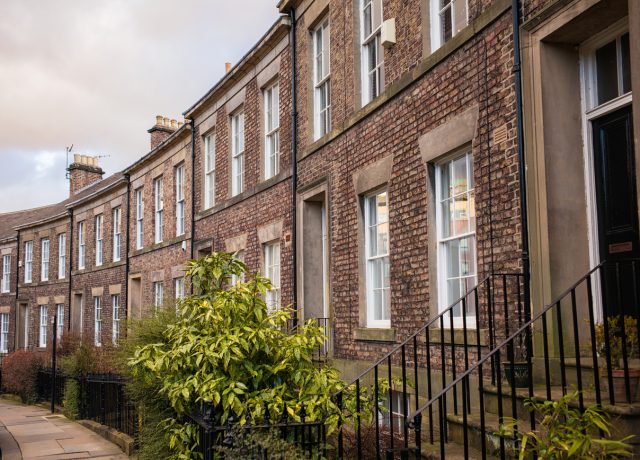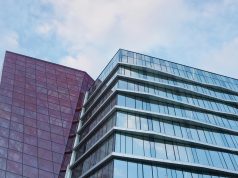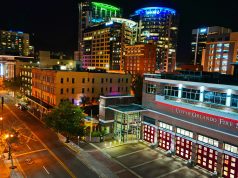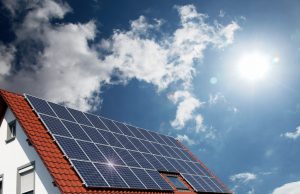
Property has become a major investment sector over the past decade or two, and most people seem to turn to it as a reliable investment opportunity, despite the current high rates of interest affecting the mortgage market.
One of the most important things about a property is where it is located. The facilities around your house, such as shops, parks or public transport, can affect how much your house is worth.
In this article, we’ll talk about how your local area can cause a property’s price to go up or down. Knowing about these aspects can help you make better decisions when you’re buying a house, and help you get the most from your investment.
Neighbourhood quality and amenities
The neighbourhood in which a property is located influences its value, desirability and market demand. First and foremost, the neighbourhood’s level of safety is a top factor influencing a property’s value. Most people seek neighbourhoods with low crime rates, an active neighbourhood watch program and well-lit streets.
The presence of things such as gated communities and security systems enhance the perception of safety in the neighbourhood, thus increasing a property’s value. In most cases, buyers are willing to pay a premium for properties in neighbourhoods they feel secure in.
The proximity and accessibility to various amenities also influence property values. Services such as parks, restaurants, shopping centres, libraries and cultural attractions in proximity tend to attract buyers and command high prices.
On the topic of leisure activities, it is also worth considering the appeal of various forms of entertainment to prospective buyers. A neighbourhood’s proximity to venues offering casino experiences, for instance, can be a bonus for those who enjoy such entertainment. While online live casino games can be accessed almost anywhere in the world, being able to experience the real thing can help to drive more people into an area and increase its desirability. These establishments not only provide a form of leisure but also contribute to the nightlife of an area, further enhancing its appeal to a younger demographic.
Transportation and accessibility
The ease of commuting and access to various modes of transportation are highly valued by homebuyers. Properties located near reliable and efficient public transportation systems, such as bus stops, underground stations or train stations, typically have a higher price. The proximity to public transportation reduces commuting time and reliance on expensive cars, thus driving up the property value.
The concept of walking and biking as a way of exercising has gained prominence recently, and areas that score highly in these aspects have increased property value too. Walkable areas, pedestrian-friendly streets and access to various amenities are always in high demand. Similarly, bike-friendly areas provide easy access to bike trails. The availability of safe and convenient walking and biking options enhances the liveability of an area and attracts buyers seeking a more active and sustainable lifestyle.
Development and regeneration
While we DIY or make use of professional services to make changes to our own houses to improve their appearance and add value, the pace of development and regeneration in a local area can have a direct influence on a property’s value too. Areas of commercial development are usually more desirable as it shows that more and more opportunities such as jobs could soon be available.
Areas undergoing urban revitalization initiatives experience a surge in property value as areas are transformed into vibrant and attractive areas. When investors and developers recognize the potential for growth and improvement in an area, property values tend to rise.
Natural and environmental factors
The natural surroundings and environmental factors significantly affect property values. Properties located near natural attractions like beaches, lakes or mountains tend to be priced higher due to their scenic views and recreational opportunities. Additionally, properties with private access to water bodies or unique features experience increased demand.
But remember, environmental factors such as air and noise pollution also impact property value negatively, as they affect residents’ quality of life.
Demographics and market demand
The demographics of an area play a crucial role in shaping market demand and ultimately affect the value of properties. The composition of the area’s population, including factors such as age, cultural diversity, income levels and education will also influence the desirability of an area.
Areas with a high concentration of young professionals often experience increased market demand and rising property value as young professionals prioritize areas that offer a vibrant urban lifestyle with proximity to job opportunities, entertainment venues, trendy restaurants and nightlife. They seek areas with a bustling social scene, convenient access to public transportation and opportunities for networking and career growth.
Those with children tend to choose areas with family-friendly amenities and a strong sense of community. The availability of spacious homes, proximity to quality education and a safe environment for kids to grow and thrive contribute to increased market demand and higher property value.
As we can see, many factors contribute to a property’s value, but the local area in which a property is situated plays a crucial role. Understanding how the neighbourhood, amenities, transportation, development, natural factors, demographics and market demand influence property value can help you to make an informed decision on where you want to live or invest.













